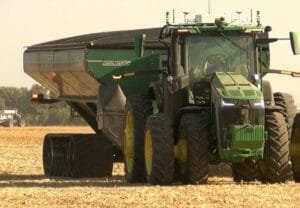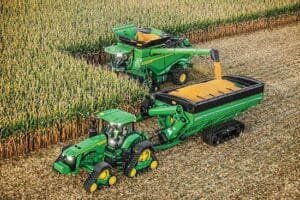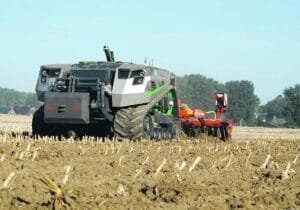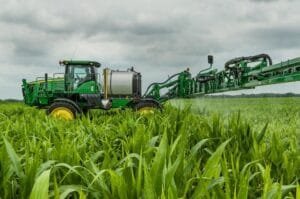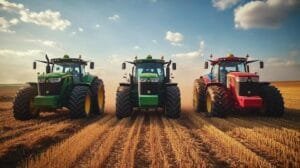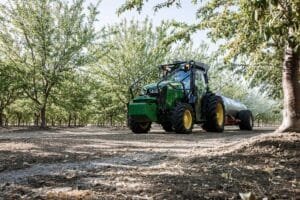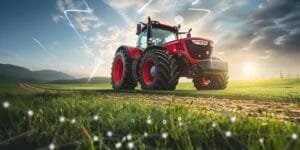Steel Plow Integration (1837)
Long before rows of gleaming green or red machines adorned rural landscapes, John Deere created something deceptively simple-the steel walking plow. When fields in the heartland buckled beneath dense, sticky soil, his solution cut through earth with an ease that astonished many. It wasn’t a tractor as we imagine today but provided the essential precedent for mechanized cultivation. If one looks back with fair judgment, there’s a peculiar logic to starting not with engines but sharp steel.
First Gasoline-Powered Tractor (1892)
Change seemed slow then-until Charles Hart and Charles Parr unveiled their gasoline-powered tractor. Bulky and odd-looking by contemporary standards, their invention still allowed farmers to transcend animal power. “Gasoline traction engine” sounds arcane now; however, standing next to such a contraption in the field must have produced an elegance of anticipation regarding labor’s future.
Riding Cultivators Appear (1863)
Rather than pulling cultivators manually or via draft animals-a punishing enterprise-riding cultivators let operators work from a mounted seat. Not that comfort transformed productivity overnight. But this shift fostered new ergonomics: handling crops without exhaustion became plausible even during heavy spring rains or extended dusk hours.
Pneumatic Rubber Tires Revolutionize Traction (1932-1937)
Steel wheels dig ruts; they flip clods unnecessarily and compact earth excessively. Allis-Chalmers teamed up with Firestone to concoct pneumatic rubber tires for tractors-a critical advancement many overlook in light of flashier digital marvels today. The result didn’t simply mean softer rides; tire adoption brought improved traction efficiency and better fuel economy across unpredictable terrains.
Diesel Engines Meet Wheels (1935)
Until diesel’s marriage to wheeled tractors by International Harvester in 1935, much machinery limped along on lower-torque gasoline units or even steam propulsion for that matter-not ideal considering both costliness and maintenance burdens weighed heavily on farm economies owing no small part to fluctuating market prices on crude oil derivatives at the time.
First Factory LPG Tractor Launches (1941)
With wartime priorities redirecting strategic resources such as gasoline toward other pursuits during early 1940s upheaval, Minneapolis-Moline introduced broad-acre producers everywhere to LPG-fueled machines boasting 10% greater output while curbing fuel costs substantially.
Hydraulics Take Command: Load-Sensitive Systems Arrive (1973)
Allis-Chalmers again charted new territory decades later. Its implementation of load-sensitive hydraulics enabled implements’ precise adjustments depending upon soil conditions or attached equipment weight, whereby sudden stalling under strain dropped off like gamblers departing after midnight losses rather than continuing unchecked through harder ground.
Tractors Overtake Horses & Mules on American Farms (1954)
The year signified neither thunderous applause nor tables overturned at county fairs-but quietly delivered statistical confirmation: more tractors existed across farms than horse teams for the first time ever by midcentury. In practical effect, this meant American agriculture could finally scale up without traditional animal husbandry constraints shackling operational growth rates anymore-though some romantic souls did lament departing silhouettes against fading sunsets nonetheless.
Electronic Lift Control Adds Precision Implements Handling (1986)
Massey Ferguson raised another banner when it launched electronic lift control three-point hitches standard among its range. No longer left guessing about implement height adjustment speeds under variable workloads-now more uniform furrow depths emerged routinely regardless whether dragging plows northward or lowering mowers going east-by-southeast.
| Innovation | Year | Contribution |
|———————————-|———-|—————————————————————————————|
| Steel walking plow | 1837 | Allowed working dense soils efficiently |
| First gasoline-powered tractor | 1892 | Replaced animals with self-propelled engine power |
| Riding cultivator | 1863 | Increased operator comfort & endurance |
| Pneumatic tires | 1932-37 | Improved ride quality & lowered soil compaction |
| Diesel-wheeled tractor | 1935 | Boosted reliability while offering greater torque |
| Factory LPG model | 1941 | Fuel savings plus extra horsepower |
| Load-sensitive hydraulics | 1973 | Optimized attachment responsiveness |
| Tractors surpassing horses/mules| ~1954 | Mechanization superseded traditional draft animals |
| Electronic lift control hitch | 1986 | Enhanced precision over modern implements |
Some literature places this shift slightly earlier depending upon region surveyed.
Farm robotics naturally belong somewhere here too-as GPS-directed systems appeared alongside precision telematics only after map grids faded into pixel data overlays sometime after Y2K crises fizzled out quietly enough nobody truly minded their disappearance except perhaps nostalgic surveyors lacking steady employment options. What was initially deemed science fiction eventually made old harvest tales feel almost pedestrian when autonomous units planted corn rows straight as compass needles tracked across pastureland once trampled by livestock only loosely corralled.
Admittedly-inserting rubber tracks into tractors didn’t always diminish compaction concerns right away since flinty soils sometimes proved truculent even during drier planting windows than anticipated.
How all these waves washed together is less formulaic sequence and more cascade tumbling stones down terraced hillsides: innovations crash together unpredictably yet sometimes create rich silt valleys below where future farming thrives.


